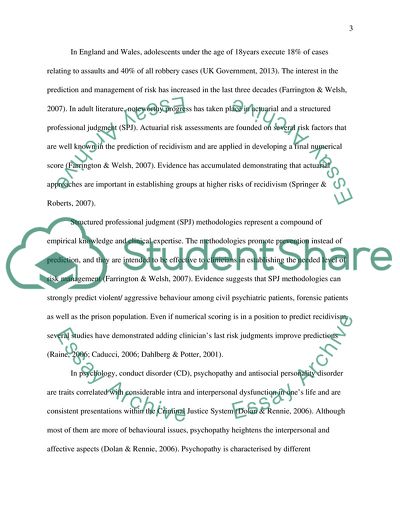Cite this document
(Can Psychological Assessments Predict Desistence From Offending Research Paper Example | Topics and Well Written Essays - 4500 words, n.d.)
Can Psychological Assessments Predict Desistence From Offending Research Paper Example | Topics and Well Written Essays - 4500 words. https://studentshare.org/psychology/1815879-can-psychological-assessments-that-help-identify-resilient-personality-traits-predict-desistence-from-offending
Can Psychological Assessments Predict Desistence From Offending Research Paper Example | Topics and Well Written Essays - 4500 words. https://studentshare.org/psychology/1815879-can-psychological-assessments-that-help-identify-resilient-personality-traits-predict-desistence-from-offending
(Can Psychological Assessments Predict Desistence From Offending Research Paper Example | Topics and Well Written Essays - 4500 Words)
Can Psychological Assessments Predict Desistence From Offending Research Paper Example | Topics and Well Written Essays - 4500 Words. https://studentshare.org/psychology/1815879-can-psychological-assessments-that-help-identify-resilient-personality-traits-predict-desistence-from-offending.
Can Psychological Assessments Predict Desistence From Offending Research Paper Example | Topics and Well Written Essays - 4500 Words. https://studentshare.org/psychology/1815879-can-psychological-assessments-that-help-identify-resilient-personality-traits-predict-desistence-from-offending.
“Can Psychological Assessments Predict Desistence From Offending Research Paper Example | Topics and Well Written Essays - 4500 Words”. https://studentshare.org/psychology/1815879-can-psychological-assessments-that-help-identify-resilient-personality-traits-predict-desistence-from-offending.


